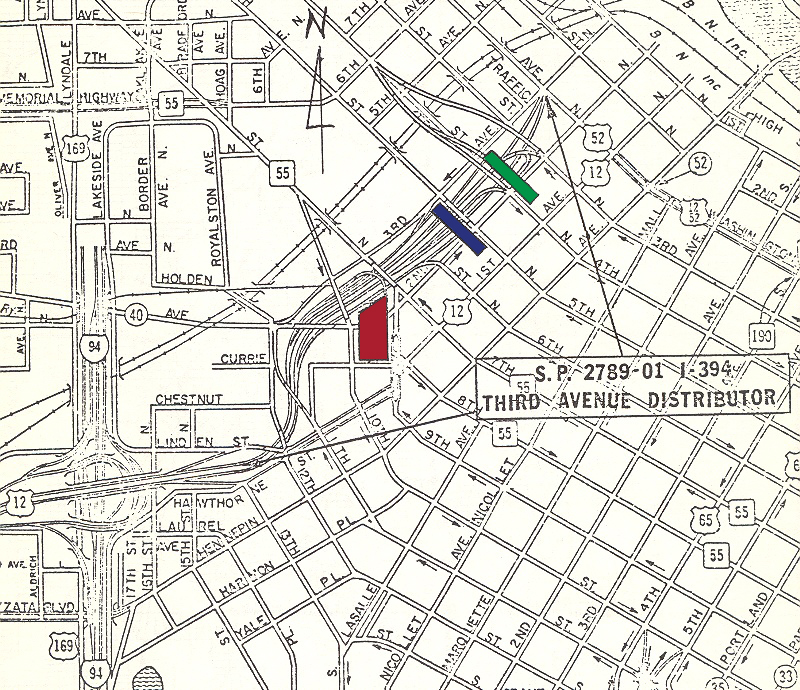History

The ABC Ramps were part of the city of Minneapolis’ plan to mitigate congestion and maintain walkability in the downtown area as early as 1969. The Minneapolis Municipal Off-Street Parking System was envisioned in the 1970 Metro Center and 1985 Downtown Plan. These plans proposed fringe parking on the edge of downtown Minneapolis.
The construction of I-394 into downtown Minneapolis created an opportunity to build commuter-focused parking garages. The garages, first known as the 7th Street, 5th Street and 4th Street parking garages and later branded as the ABC ramps, were built from 1989 to 1992 using federal Congestion Management and Air Quality funds. The purpose of the ramps were, and still are, to support reducing congestion and improving air quality by reducing single occupancy vehicle trips into downtown Minneapolis.
In 2019, the ABC Ramps became the ABC Ramps Mobility Hub to reflect the multi-modal transportation options that are available in the three ramps, including local and regional bus service, light rail transit, commuter rail and carpools/vanpools.
This shared vision partners MnDOT as the owner and the city of Minneapolis as manager of the ramps. The Federal Highway Administration has oversight of the ramps.
Target Field construction
When first built, the ramps offered conveniently located parking options for events at Target Center and the Hennepin Theater District. But in 2010, event revenue increased with the construction of the Minnesota Twins’ Target Field. The Twins considered several sites around the Twin Cities, but chose downtown Minneapolis because of the existing transportation infrastructure that served the area, ample parking supply and the ABC Ramps’ multi-modal facilities of a light rail station, commuter train station, transit bus stops and regional bicycle trail connections.
Parking revenues paid for ramp improvements to accommodate the new Target Field. After the Twins’ arrival, event revenue grew from about 17 percent to 35 percent of the ramps’ total revenue. The increase in event parking allowed underused ramp space to be put to use on weekends and evenings.
Learn more about the Target Field project.
Changes bring challenges
The ramps were built with an intended 50-year life. At its midpoint, the ramps face these challenges:
- Carpools are declining; single occupancy vehicles are increasing – causing ramps to fill up more than in the past.
- This drives demand for Single Occupancy Vehicle contracts, which are the only way to guarantee a parking spot.
- Minneapolis is a growing downtown with more businesses and more employees.
- Changing travel behaviors, including transportation network companies such as Uber and Lyft.
- Commuters want flexibility in their travel behaviors, laying the way for the ramps to be used as a mobility hub.
- Technology changes, including electric vehicles and connected and automated vehicles.
MnDOT is embracing these challenges by studying the needs of travelers and commuters and updating technology, programs and services.
Public, private partnerships
Collaboration with the Minnesota Ballpark Authority, Minnesota Twins, Metro Transit, city of Minneapolis, Hennepin County, MnDOT and others represents a unique and successful public-private partnership that brings economic development to the region.
